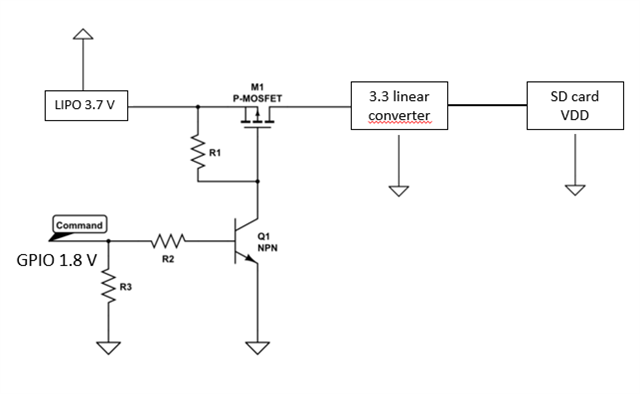Hello everyone, I am developing a wearable project using nrf52840 board and ANT communication protocol (max 60 Hz transmission from nrf to PC). I am interfacing the micro with two sensors (1.8 to 3.3 VDD) and an SD card (3.3 VDD). My goal is to power the entire system with a rechargeable 3.7 V LiPo battery.
By consulting the online power profiler i noticed that when the radio si used at short interval it is better to power the board with higher voltages, it is correct?
I am now strugglng to find the most power efficient way to power the system, i got three options:
1) LiPO --> 3.3 converter --> all peripheral at 3.3 V
2) LiPO --> VDDH micro --> VDD micro to power the sensors (by doing so i can select REGOUT0 to 1.8V so reduce sensors power consumption)
LiPO --> 3.3 converter --> Sd card VDD
3) LiPO --> 3.3 converter --> sd card --> 1.8 converter --> micro and sensors
Another topic is related to depowering the sd card during inactive state using a mosfet to save power, what is the best configuration in this case high side configuration (using a p-mos) or a low side (n-mos)?
I hope I made the situation clear, thank you in advance.
Regards Lorenzo





